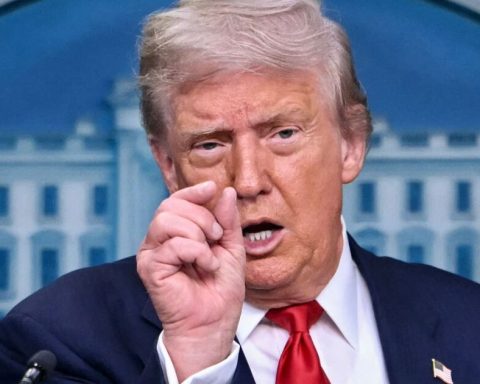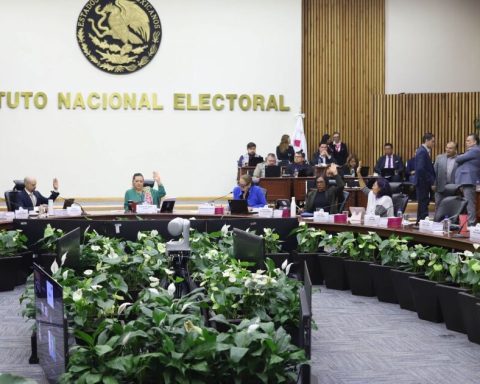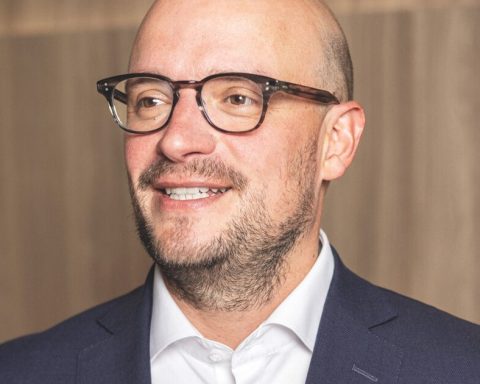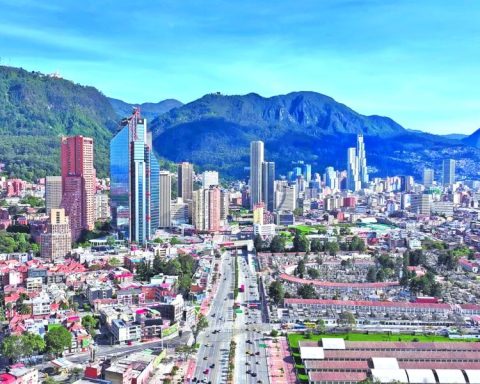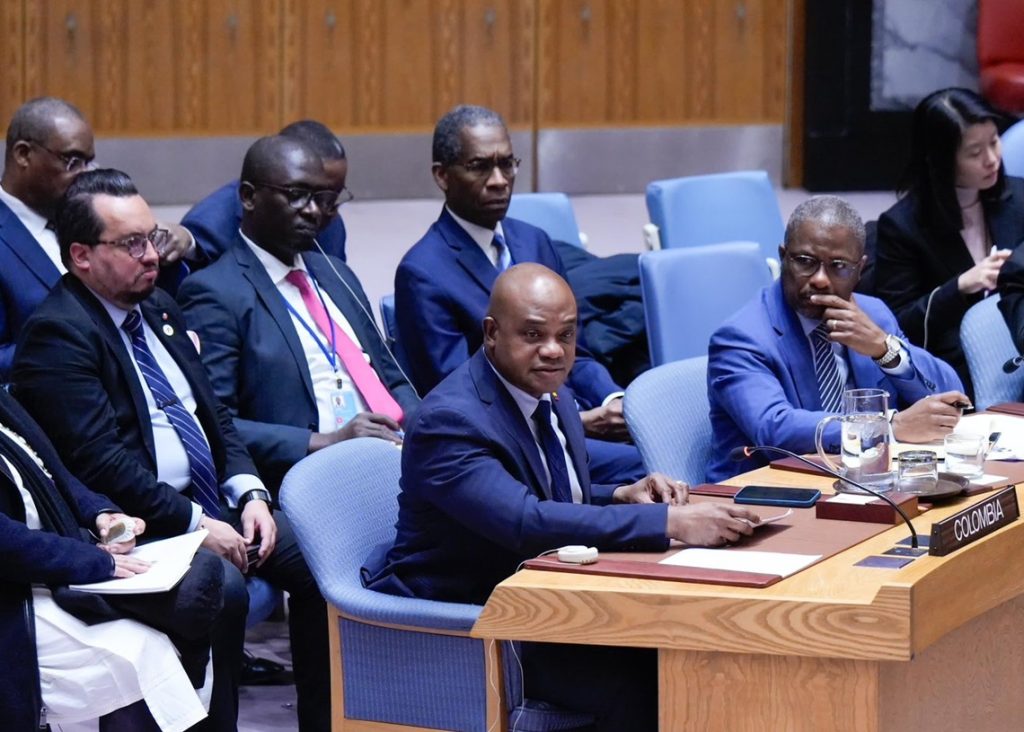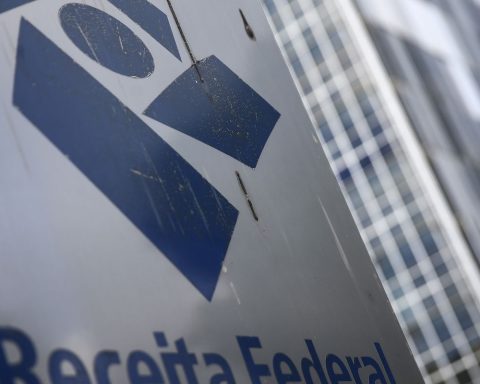Héctor Díaz is one of the youngest dealers in the pictorial art market in Mexico. Ah!, but that is where the identifying mark of our interviewee lies, he not only sells works of art, he considers himself a “builder of artistic careers and collections.”
Born in Ciudad Juárez in 1986—“in a border city in the middle of the desert; very north of Mexico and very south of the United States, he says with some pride, Díaz grew up in a binational culture, studied Business at the Tecnológico de Monterrey and at IPADE, and in 2020, at the age of 33, he undertook the adventure to found his own art gallery, in Zapopan, Jalisco, under the seal of his name: HECTOR DIAZ; Thus, in capital letters and without accents, “a gallery of contemporary, international and universal art,” he states.
Furthermore, he is an art critic and curator who represents painters of international stature in Mexico, and in the run-up to the Art Week in Mexico City, he offers us a novel point of view on the pictorial market, contrasting with the euphoria that He unleashes this great showcase of Latin American art among artists and collectors and, in addition, gives us reason for the gallery concept that he represents and defends.
— You are a young player in the contemporary art market in Mexico, how do you define yourself?
I am the first gallery owner from Chihuahua, and one of the youngest in the country to start a gallery. I specialize in primary market painting, I am not in the secondary market, I prioritize living artists. I am a young gallery owner and new to the art industry in Mexico and the world. I believe that one does not look for art, but that it finds you, and captures you forever.
My career has consisted of representing artists and collectors, and in exhibitions with high cultural and social impact. I never set out to be the best gallery in Jalisco, in Mexico, in Latin America, no, that would have been a very easy challenge… I set out to be a gallery that competes in the world, even on a smaller scale.
—How did HECTOR DIAZ come about and what has been his itinerary?
Upon entering and understanding this industry, I discovered that in Mexico there are almost no galleries, there are very few of us, what there are are art stores. Sadly there is a tremendous lack of professionalism in the sector, artists and collectors are not represented, but rather abused, art sellers only look out for them; The push for artists in the art industry and on the world stage is almost utopian.
I also discovered that there are many pseudo artists who seek fame and label, but that there are really few true artists per generation with a unique voice capable of transcending and writing the new art books.
I have the honor of representing two great European masters: the realist Javier Arizabalo from France and the fauvist Stefano Puleo from Italy. They are so great that they call themselves painters and not artists, and they still seek to improve and continue learning, something unusual in young creators.
—What role do collectors, artists, and alliances with exhibition spaces play in your project?
The representation of artists is similar to the wine process, you require good grapes, a good harvest and careful aging. Just because a wine is behind a display case doesn’t mean it’s good; The same thing happens with art.
The representation of collectors in Mexico does not exist, art dealers sell to whoever they want. In theory, galleries represent collectors first, then artists. I assure you that few Latin American gallery owners know who Joseph Duveen was.
—Why does HECTOR DIAZ remain outside the big circuits such as the upcoming Art Week in Mexico City?
If you go to an art fair, and there are 100 galleries participating with 10 artists each, well there are 1000 creators, but not necessarily 1000 artists… it is a visual spectacle, it is a farce disguised as glamour.
—Why did you embark on the adventure of setting up a gallery in a tequila factory, why did the project fail and what lessons did it leave you?
In 2023 I moved my gallery in the city – “White Cube” style – to a tequila distillery, in Tequila, Jalisco, I was working for six months, I intended to be the first Tequila-Gallery in the world and one of the private cultural venues largest in Mexico with four exhibition halls. I decided to cancel the project for professional reasons, so I had to lose both spaces.
It was difficult to cancel our successful Exhibition Program, but I took advantage of the moment to take my gallery to the next level: implement an institutionalization.
The majority of galleries – and companies in general – are unable to remain in the market and continue in the future due to the lack of institutionalization.
—Explain to us what this institutionalization consists of
Institutionalization allowed HECTOR DIAZ to operate under international standards and represent our collectors and artists in a spectacular way, always adding value to them. It also allowed us to enter the market and the international industry, which is where everything really works.
— Do you believe in the idea of the democratization of art?
I do not believe in the democratization of art in the art industry, I believe in artists and I believe in collectors, but the real ones are rare, that is why it is a luxury industry. However, I do believe in the democratization of exhibitions for communities, because they are culture.
—In addition to being a gallery owner, you are a critic and opinion leader, tell us about that aspect
I have had the opportunity to write opinion articles in El Economista for years, this has allowed me to share ideas and reflections on the Mexican industry, so unknown, so romantic, but also so devastated and forgotten, to raise awareness, hoping that it can improve. , the artists deserve it.
—How do you currently perceive the contemporary art market in Mexico and the world?
Mexico does not lack artists, but gallery owners. There are artists creating spectacular art, but there are almost no gallery owners creating possibilities.
Being a gallery owner is not just about selling art and holding exhibitions, it is about building careers and collections.
Few understand what a gallery entails: you sell something that almost no one needs; your buyers are usually the richest people in the world; you deal with international artists; you mount high-impact exhibitions; you generate editorial topics; you make alliances with the media; you have digital strategies; you offer chic events; you manage international logistics… all at the same time; The operation of a gallery is very complex.
Half of the galleries in the world operate in the red… a gallery is almost destined to close… that’s why it’s important to show that it can be done…
—What is your highest aspiration as a gallery owner?
I want to position Mexico in the art industry of the 21st century, I want global artists and collectors to feel represented from my country.
Artists represented by HECTOR DIAZ
- Javier Arizabalo | France
- Stefano Puleo | Italy
- Daniela Kovacic | Chili
- Francisco Correa | Colombia
- Duma Arantes | Portugal
- Valeria Reyna | Mexico
- Heyder Reyes | Cuba
- Christian Escobar | Guatemala
- Edgar Mendoza Mexico

